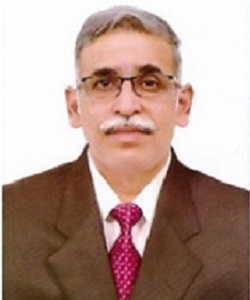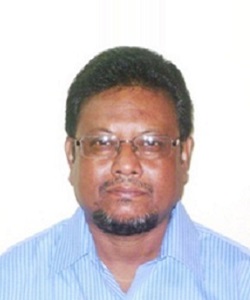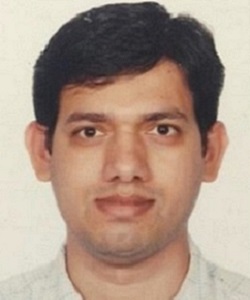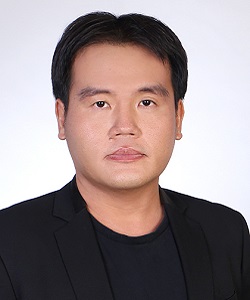Keynote
|
1. Prof. DVLN Somayajulu,Indian Institute of Information Technology Design and Manufacturing (IIITDM),Kurnool
|
 |
| Prof. DVLN Somayajulu, professor of Computer Science and Engineering and Chair professor of Electronics and ICT Academy, National Institute of Technology (NIT) Warangal is currently working as Director of Indian Institute of Information Technology Design and Manufacturing (IIITDM) Kurnool. He has received ‘Best Engineering Researcher Award – 2015’, received ‘Best Engineering Researcher Award in September 2015’ jointly awarded by National Institute of Technology, Warangal and NIT Alumni Association in recognition of Research, consultancy and training in the field of Computer Science and Engineering, and ‘Engineer of the Year Award – 2007’on the occasion of 40th Engineers day celebrations in commemoration with 147th Birthday celebrations of Engineer Statesman Bharat RatnaMokshagundam Sir M Viswesaraya by Govt of Andhra Pradesh and IEI, AP State Centre, Hyderabad. |
| Title: Overview of Resampling Methods |
| Abstract: Resampling methods are an indispensable tool in today’s modern statistics. They involve repeatedly drawing samples from a training set and refitting a model of interest on each sample in order to obtain additional information about the fitted model. These approaches may allow us to obtain information that would not be available from fitting the model only once using the original training sample. Resampling approaches can be computationally expensive, because they involve fitting the same statistical method multiple times using different subsets of the training data. However, due to recent advances in computing power, the computational requirements of resampling methods generally are not prohibitive. My talk is confined to elaborate the two of the most commonly used resampling methods, cross-validation and the bootstrap, along with case study using R tool. Both methods are important tools in the practical application of many learning procedures. |
|
2. Prof. Prasanta K. Jana, Indian Institute of Technology (ISM),Dhanbad
|
 |
| Prof. Prasanta K. Jana is currently working as a Professor in the department of Computer Science and Engineering at Indian Institute of Technology (ISM) Dhanbad, India. He has contributed 194 research publications in his credit and co-authored five books and three book chapters. As a recognition of his outstanding research contributions, he has been awarded Senior Member of IEEE in 2009. He is also the recipient of Canara Bank Research Publication Award in 2015 and 2017. His current research interest includes wireless sensor networks, cloud computing, data clustering and machine learning. He is in the editorial board of two international journals and acted as referees in many reputed international journals. |
| Title: Fog Computing:An Emerging Paradigm |
| Abstract: The world has witnessed a tremendous growth of Internet of Things (IoT). A huge number of devices are now connected through the Internet for providing instant services to the end users in various application domains such as in smart cities, autonomous vehicles, smart home devices, e-healthcare, map services and so on. For the last decade, cloud computing played an important role to provide such high demand services through various data centers that are built by Amazon, Microsoft, Google, IBM etc. However, cloud computing suffers from many limitations such as latency, traffic congestion, processing of massive data, and communication cost and this is mainly due to a large distance between the end users and the cloud data centers. Fog computing has emerged as an essential paradigm to resolve these challenges faced by the traditional cloud computing by extending facilities of storage, computation and communication toward the edge of a network. In the recent years, fog computing has become one of the most popular technologies that supports geographically distributed, latency sensitive, and QoS-aware IoT applications in both time and cost effective manner. In this talk, my presentation will begin with an introduction to fog computing by quoting the necessary background and motivation of this paradigm. Next, I will discuss about various proposed fog-based architectures with their merits and demerits. This will be followed by the most important algorithmic part of fog computing, i.e., task offloading in which a brief survey of various proposed algorithms will be presented. The session will be ended by applications and future research directions of fog computing. |
|
3. Dr. Binayak Kar,National Taiwan University of Science and Technology,Taiwan.
|
 |
| Dr. BINAYAK KAR is an Assistant Professor of computer science and information engineering at National Taiwan University of Science and Technology (NTUST),Taiwan. He received his Ph.D. degree in computer science and information engineering from the National Central University (NCU), Taiwan in 2018. He was a post-doctoral research fellow in computer science with National Chiao Tung University (NCTU), Taiwan from 2018 to 2019. His research interests include network softwarization, cloud/edge/fog computing, and network security. |
| Title: Research Roadmap of Offloading in Federated Cloud, Edge and Fog Systems |
| Abstract: The Internet of things (IoT) devices that have taken the world by storm need computational power and storage capacity for the huge amount of data generated by them to provide the services to their subscribers. Currently, Cloud computing, Edge computing, and Fog computing are the potential paradigms that could fulfill the demand of these subscribers. Cloud computing is the on-demand availability of computer system resources, especially data storage and computing power, without direct active management by the user. However, it introduces high communication latency as the cloud servers are far away from the end-users or subscribers. The communication latency limitations of some applications are very strict which makes the cloud computing paradigm unsuitable for them. This is where edge and fog computing models come into the play key role as they can provide similar services with lower latency as they are closer to users as compared to the clouds. However, both edge and fog have also certain limitations while providing services such as capacity, capability, and coverage. For the above-discussed issues, federation comes into play a key role to resolve them. As federation can help one service provider to extend its capacity, capability and service limitations to satisfy their users' demands. Again based on the users’ demand type of input request can be classified as ultra-low, low and loose latency tasks. Such tasks can affect various offloading scenarios between clouds, edges, and fogs. For example, when there is a capacity limitation on the edge, the edge can offload its loose latency tasks to the clouds. And in some cases, the cloud can offload the highly time-sensitive data to the edges to reduce the communication latency and cost. In this talk, we will discuss various federated systems considering clouds, edges and fogs, and related offloading scenarios in detail. |
|
4. Dr. Fuxiang Chen,Senior Research Scientist in DeepSearch Inc., Korea/Singapore
|
 |
| Dr. Fuxiang Chen is currently a Senior Research Scientist in DeepSearch Inc., Korea/Singapore. Prior to that, he was a Research Scientist in Clova AI Research, Naver Corp., Korea. During his career stint, he has held different capacities such as in the management, teaching and technical roles. He received his Ph.D. degree in Computer Science and Engineering from the Hong Kong University of Science and Technology, Hong Kong. Dr. Chen has published his work in top-tier conferences such as EMNLP, AAAI, FSE, etc. He has also served as the Special Track Chair, Session Chair/Co-Chair and Web Chair in different conferences. His current main research interests lie within the cross-cutting areas in ML and NLP. He is also interested in areas such as Big Data Analytic, Data Science, Crowd-sourcing and Mining Software Repository. |
| Title: Generating Pseudo-SQL Queries from Under-Specified Natural Language Questions |
| Abstract: Generating SQL codes from natural language questions (NL2SQL) is an emerging research area. Existing studies have mainly focused on clear scenarios where specified information is fully given to generate a SQL query. However, in developer forums such as Stack Overflow, questions cover more diverse tasks including table manipulation or performance issues, where a table is not specified. The SQL query posted in Stack Overflow, Pseudo-SQL (pSQL), does not usually contain table schemas and is not necessarily executable, is sufficient to guide developers. In this talk, I will first introduce the problem of generating SQL codes from natural language questions (NL2SQL), illustrated with existing approaches. Then, I will describe a new NL2pSQL task to generate pSQL codes from natural language questions on under-specified database issues, NL2pSQL. In addition, two new metrics suitable for the proposed NL2pSQL task were defined, Canonical-BLEU and SQL-BLEU, instead of the conventional BLEU. With a baseline model using sequence-to-sequence architecture integrated by denoising autoencoder, the validity of our task is confirmed. Experiments show that the proposed NL2pSQL approach yields well-formed queries (up to 43% more than a standard Seq2Seq model). |
Venue
SJT Gallery
VIT, Vellore-632014
Tamil Nadu, India
VIT, Vellore-632014
Tamil Nadu, India
Publication Partners




